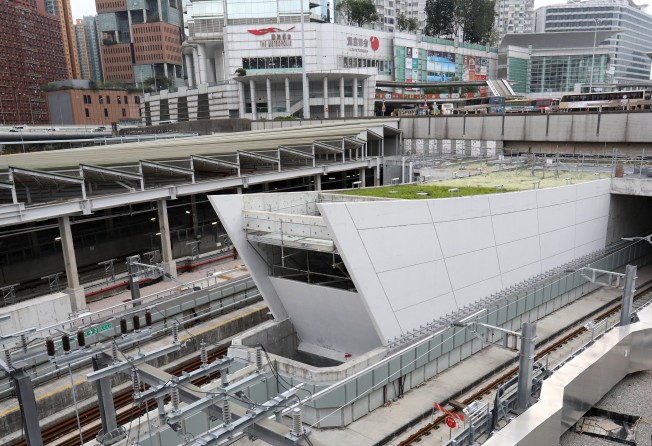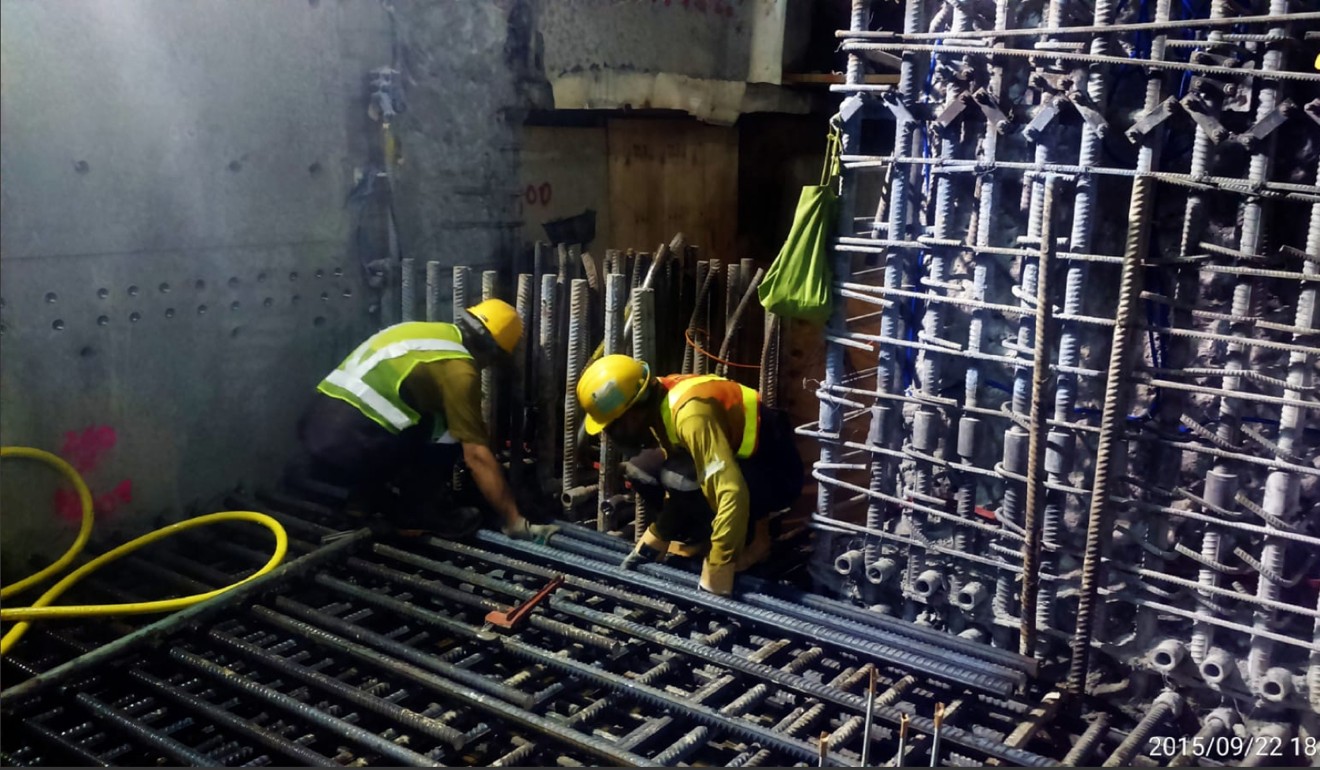Government warns MTR Corp and Leighton Contractors against altering safety standards in Hung Hom station platform case
- Counsel for government, in final submissions for inquiry, says such a move would be unacceptable and would amount to rewriting the contract
- Richard Khaw, SC, also accused Leighton of ‘corporate arrogance’ and said both parties abrogated their responsibilities

The government has cautioned the MTR Corporation and construction firm Leighton Contractors (Asia) against any attempt to lower the safety standard for the scandal-hit Hung Hom station, calling such a move unacceptable and tantamount to rewriting their contract.
The warning came on Monday as Richard Khaw, SC, representing the government, made final submissions before the commission of inquiry into the shoddy building work that has plagued the HK$97.1 billion (US$12.4 billion) Sha Tin-Central rail link.
Leighton, the main contractor for the project, has been embroiled in allegations that reinforcement bars were cut short to fake proper installation into couplers on a platform at the station, and that supporting diaphragm walls were changed without authorisation.
Khaw pointed out that recently the MTR Corp and Leighton were trying to rely on a test by the couplers’ supplier, BOSA Technology, to claim that just 60 per cent of rebar installation, an embedded length of about 26mm, would be enough to maintain the structural safety.
However, BOSA once said that the correct installation was to have 10 threads fully engaged into the coupler, or a minimum embedded length of 40mm.
“The MTR Corp and Leighton now rely on one single test result done by BOSA to argue that ‘we actually don’t need to do that much to keep the structure safe’,” he noted.
But Khaw insisted that, even purely from the perspective of assessing safety, such arguments could not exonerate the two parties from their responsibility, saying more samples needed to be tested to ascertain structural safety.

Khaw also severely criticised Leighton for harbouring “corporate arrogance”, saying it had been reluctant to accept blame even when faced with clear evidence of its failures of supervision, inspection and record-keeping.
He said such an attitude showed its complete lack of a sense of responsibility.
“The evidence overwhelmingly demonstrates that Leighton did not provide the requisite level of supervision … It is clear that the MTR Corp failed to identify that Leighton was working in ignorance or defiance of the key requirements,” he said.
The government counsel said it was “disappointing” to see the MTR Corp, which was pocketing HK$8 billion in project management fees, and Leighton come up with various arguments in the hope of diluting their supervision responsibilities.
“The MTR Corp ought to have provided the required skills and care reasonably expected of a professional and competent project manager. Disappointingly, we say, MTR failed to deliver,” he said.
He also criticised both firms for engaging in the creation of “misleading and confusing” retrospective inspection checklists. “Such practice is wholly unacceptable and represents extremely poor project management,” he said.

Philip Boulding, QC, for the MTR Corp, insisted the station structure was safe, citing the views of various experts.
“The structure has a large degree of redundancy and robustness. As a consequence, it’s got a comfortable margin of safety,” he said.
“Even to date, the inspection results are not suggestive of any systematic or large-scale threaded rebar cutting,” he argued.
However, Boulding admitted the MTR Corp had some project management issues resulting in submitting an inaccurate report to the government in June last year about the number of couplers and its as-built details. “But the MTR Corp never had any intention to mislead or deceive,” he said.
Paul Shieh, SC, for Leighton, argued that the bar-cutting incidents were just isolated cases. He also described whistle-blower Jason Poon of China Technology Corporation a “troublemaker” for making unfounded allegations of corruption against Leighton.
“Poon said it was corruption. We all know what happened to the completely unfounded allegation of the corruption,” he said.